Swamp Antechinus
Swamp AntechinusAntechinus minimus maritimus | |
|---|---|
| Kingdom: | Animalia |
| Phylum: | Chordata |
| Class: | Mammalia |
| Subclass: | Marsupiala |
| Order: | Dasyuromorphia |
| Family: | Dasyuridae |
| Status | |
| World: | Least concern (IUCN Red List 2025) |
| Australia: | Vulnerable (EPBC Act 1999) |
| Victoria: | Vulnerable (FFG Threatened List 2025) |
| Profiles | |
| Australia: | Atlas of Living Australia |
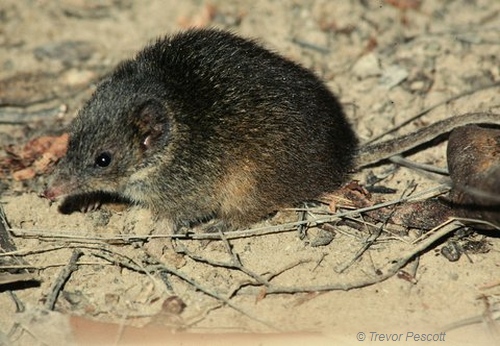
The Swamp Antechinus Antechinus minimus is a small carnivorous marsupial occurring in south-east Australia.
Two subspecies are recognised;
-
Antechinus minimus maritimus - found on mainland south-eastern Australia (SE mainland).
-
Antechinus minimus minimus - found in Tasmania and the Bass Strait Islands (Smith 1983).
Identification
The Swamp Antechinus has a head to body length of 95-140mm with a tail length 70% of the head to body length. It is a thickset antechinus with a long slender muzzle, long foreclaws, short ears that do not protrude far beyond the fur and pale eye-rings. The Swamp Antechinus (SE mainland) has eight teats whilst the Tasmania and the Bass Strait Islands population has six teats. The upperparts are brown with a yellow or rufous wash, particularly on the rump, flanks and hindlegs, with paler buff or grey-yellow underparts and pale claws (Menkhorst 2004).
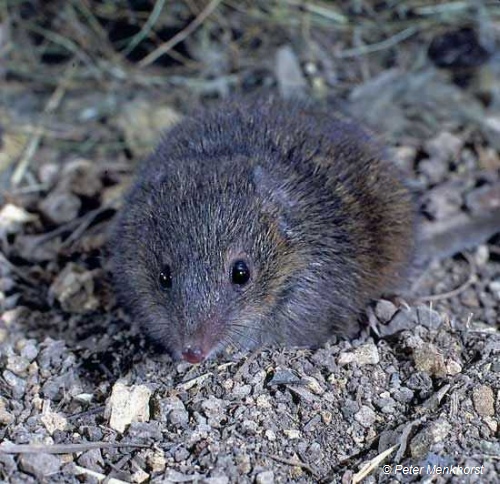
The Swamp Antechinus is similar in appearance to the Dusky Antechinus Antechinus swainsonii; however it has a paler, more yellow-ginger colouration on the upperparts than the Dusky Antechinus which usually lacks the yellow or rufous wash on its rump and eye-ring (Menkhorst 2004).
Distribution in Victoria
On mainland Australia, the Swamp Antechinus is found near coastal areas from Robe, South Australia in the west of its range to Corner Inlet in Victoria. In Victoria there are three main concentrations of Swamp Antechinus:
- Portland/Casterton area; predominantly within the Glenelg Plain bioregion, key locations being Lower Glenelg National Park, Discovery Bay Coastal Park, Wilkin Flora reserve and forest areas between Dartmoor to Casterton.
- Otways/Port Campbell area; predominantly at Port Campbell National Park (Warrnambool Plain bioregion), Great Otway National Park at Cape Otway and Anglesea (Otway Plain bioregion), Anglesea heathlands and Carlisle State Park (Otway Plain bioregion) (VBA 2016).
- Bass Coast & Wilsons Promontory; in particular the Gurdies area on the eastern side of Western Port Bay, the Wonthaggi heathlands, Inverloch, Cape Patterson, Walkerville / Cape Liptrap and Wilsons Promontory National Park.
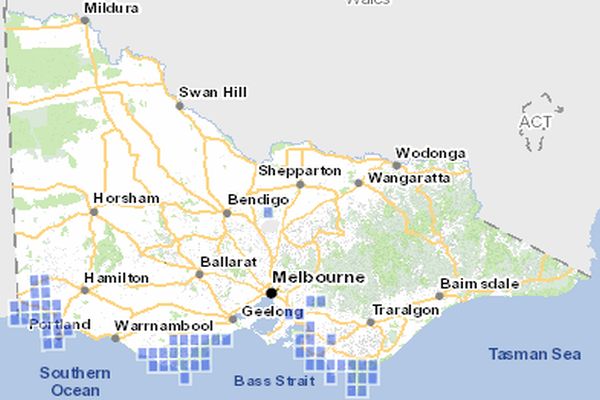
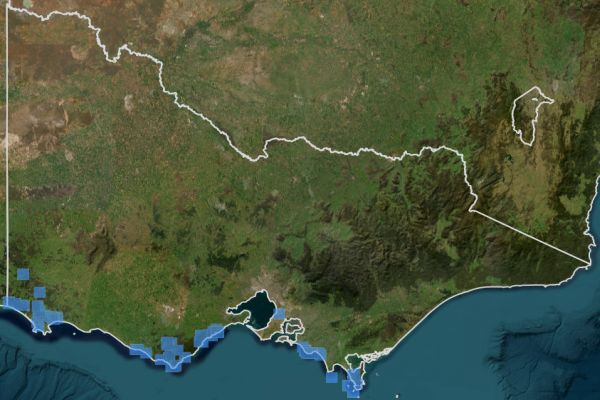
Swamp Antechinus records from 2000 to 2025. Source: VVB 2025.
Habitat and ecology
Swamp Antechinus habitat is typically wet heath, heathy woodland, sedgeland and dense tussock grassland, rarely above 200m (DE 1996, Menkhorst 2004). In a study done by Wilson et al. (2001) it was found that although Swamp Antechinus (SE mainland) were found in a variety of vegetation communities with different dominant floristic groups these communities had a consistently high percentage of understorey cover across them. The spatial distribution of these communities is thought to be important for the preservation and dispersal of the species and the species is considered a habitat specialist at the microhabitat level, preferring dense, closed heathland (Wilson et al. 1986, Moro 1991, Wilson et al. 2001). Key bioregions in Victoria;
- Otway Plain
- Gippsland Plain
- Glenelg Plain
- Volcanic Plain
- Otway Ranges
- Wilsons Promontory
- Warrnambool Plain
- Dundas Tablelands
Feeding
The Swamp Antechinus is an entirely terrestrial species that eats invertebrates dug from the topsoil and litter and lives in dry grass nests in shallow burrows (Menkhorst 2004).
Breeding
Mating occurs during May - July. Females give birth July-August. Males die within a few weeks after mating. Females of the species are monoestrous (one reproductive season per year), some females may live to breed in a second season. If there was a major disruption of the reproductive cycle being completed in a particular year local populations could suffer sever population decline or even possible extinction in isolated populations that are in remnant patches of habitat.
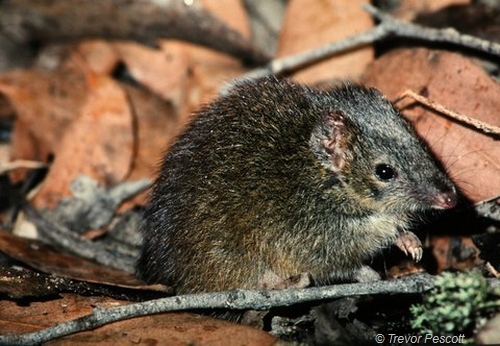
Threats
In its final recommendation the Scientific Advisory Committee (SAC 2002) determined that the Swamp Antechinus is:
- in a demonstrable state of decline which is likely to result in extinction.
- significantly prone to future threats which are likely to result in extinction.
- very rare in terms of abundance or distribution
Major threatening process to the Swamp Antechinus (SE mainland) are associated with habitat loss and fragmentation of habitat, which is due to:
Inappropriate Fire management
The Swamp Antechinus is a late successional species and so is vulnerable to extinction at sites that are frequently burnt as it takes many years to recolonise a site (Wilson 1990). This is a particular problem for the species when populations occur close to human settlements, as fuel reduction burning for the purpose of protecting properties and human lives is often conducted at time intervals that are detrimental to Swamp Antechinus populations.
Wildfire
Some populations in the Otway Ranges are known to have become extinct after the 1983 Ash Wednesday wildfire event (Wilson et al. 2001).
Drainage of swamp habitats
This is often undertaken to make land available for development or production purposes, as it is not seen as valuable in its natural state, and the role it plays as habitat for native fauna is often overlooked or unacknowledged.
Feral predators
Isolated populations of Swamp Antechinus are vulnerable to feral predators such as the Red Fox and feral cats (SAC 2002).
Fragmentation of populations
Roads and walking tracks may fragment populations, for example the Great Ocean Road has separated some coastal populations from inland populations where there are no habitat corridors present under the road that can be used as a thoroughfare by the species (Wilson et al 2001).
Conservation of Swamp Antechinus in Victoria
The conservation status of Swamp Antechinus was re-assessed from Near Threatened in 2013 (DSE 2013) to Vulnerable in 2020 as part of the Conservation Status Assessment Project – Victoria (DELWP 2020). It is listed as Vulnerable under the FFG Threatened List 2025.
Suggested major conservation objectives:
- to protect and enhance the species and its habitat to ensure long term species survival and viability; and
- to achieve an increase in the distribution of the species to a level equivalent to that of pre-European populations.
Key Local Government Areas for conservation of Swamp Antechinus
- Surf Coast Shire
- Glenelg Shire
- South Gippsland Shire
- Colac Otway Shire
- Bass Coast Shire
- Corangamite Shire
- Cardinia Shire
Suggested management activities
Improved fire management
Long-term continuation of this species will probably be dependant on well-planned fire management regimes within its habitat and throughout its range. Prescribed burning is currently conducted for a variety of reasons including protection of property and human life. Management for the Swamp Antechinus should be incorporated into appropriate DELWP fire protection plans to ensure that fire frequency is not going to be too great and to exclude fire from high quality Swamp Antechinus habitat. This will be one of the most significant issues for the conservation of the Swamp Antechinus as the need for low frequency fire regimes and fire exclusion, for the survival of the species, will be weighed against the need to protect properties and human lives, which will most likely result in public pressure for high frequency controlled burning.
Habitat diversity
Establishment of a variety of successional aged habitats that would result from the recommended fire regime will benefit other flora and fauna species in the area that may be dependant on the establishment of different successional ages.
Habitat protection
Through implementing appropriate fire regimes at key sites and preventing inappropriate site uses that may contribute to the destruction and further fragmentation of Swamp Antechinus habitat. Due to the importance of habitat structure for the preservation and dispersal of the Swamp Antechinus it is essential to protect and maintain the species’ preferred habitat of dense closed heath.
Protection from Wildfire
As the Swamp Antechinus is a late successional coloniser after fire events due to its high habitat specialisation in regards to spatial distribution and vegetation structure it is important for management to incorporate appropriate fire regimes which will protect Swamp Antechinus habitat from potential wildfire events and exclude prescribed burning from key habitat areas. Incorporation of ecological burning regimes into existing and future fire management plans is critical to the preservation of the Swamp Antechinus to ensure that areas of late successional aged habitat will be preserved along with other successional age classes.
Limit fragmentation of populations
Limit the construction of new tracks in prime habitat and assess the impact of existing walking tracks on Swamp Antechinus dispersal and population isolation. Undertake revegetation of any tracks found to be contributing to population isolation.
Planning controls
Exclude inappropriate habitat alteration resulting from clearing, industrial, mining and grazing activities, drainage of swamp habitats or other activities. To ensure that the above habitat management objectives are met it is crucial to determine and prevent potential land-use conflicts at particular sites or in existing management plans.
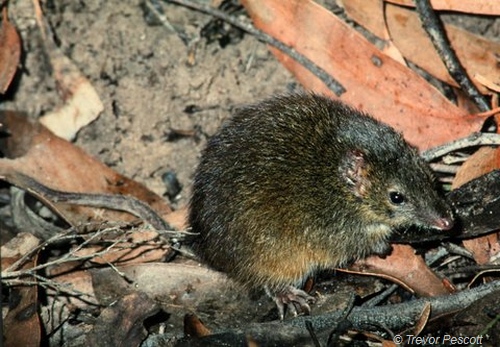
Management partnerships and projects
The South Gippsland Conservation Society undertakes monitoring at Screw Creek, Inverloch. The group plans undertaking further camera surveys in 2016/17.
The Geelong Field Naturalists Club has undertaken monitoring in the Urquhart's Bluff area near Anglesea.
The Mammal Survey Group Victoria undertakes surveys at various sites across Victoria.
Chris Jonstone from Monash University completed a PhD thesis in 2010 which involved the monitoring of small mammals in parts of the parts of Strzelecki Ranges and Gippsland Plain. Although his research focused on the Agile Antechinus he found he found relative abundances were lower and parasite loads higher in fragmented than continuous forest. Fragmented populations displayed indications of poor health status and potentially caused by chronic stress, frequent blood loss or heavy parasite loads. These are issues which might also apply to Swamp Antichinus. Response of the Agile Antechinus to Habitat Edge, Configuration and Condition in Fragmented Forest.
In 2002 Local Landscape Plans were prepared for a number of areas in Victoria as part of Victoria's Biodiversity Action Planning. These plans aimed to restore, protect and enhance biodiversity values, which include sites where Swamp Antechinus occur. Implementation of Local Landscape Plans involves land managers such as Parks Victoria and private landholders often through Landcare or Conservation groups.
Revival of Swamp Antechinus in the Eastern Otway Ranges
Long-term surveys in the Eastern Otway’s have been carried out since 1975. Surveys between 1975 to 2007 found Swamp Antechinus had an abundant healthy population but subsequent surveys between 2013 - 2020 revealed a low abundance of Swamp Antechinus with only 8 records between 2013 -15 and no records in 2016 -17 which pointed to a major decline in the population.
New surveys conducted across the Eastern Otway’s in June 2021 to May 2022 found a significant number of new records which indicates there has been a revival of this species at a number of sites:
- Painkalac Creek - last recording 2002
- Hutt Gully coastal dunes, gully - last recording 2015
- Urquhart's Bluff coastal headlands, last recording 2007
- Edwards Creek Track gully, last recording 2018
- Carlisle Heathlands
In addition, several new habitat refuge areas have been identified for targeted cat and fox control.
More information – SWIFFT Seminar Notes May 2022 from presentation to SWIFFT by Dr. Barbara Wilson (Associate Professor - Deakin University).
References
DELWP (2020) Provisional re-assessments of taxa as part of the Conservation Status Assessment Project – Victoria 2020, Department of Environment Land Water and Planning, Victoria. Conservation Status Assessment Project – Victoria
DSE (2013) Advisory list of threatened vertebrate fauna in Victoria - 2003, Department of Sustainability & Environment, Victoria, (now Department of Environment, Land, Water & Planning) East Melbourne, Victoria.
DE (1996). Action Plan for Australian Marsupials and Monotremes, ed. Maxwell, S., Burbidge, A. A., Morris, K. Department of Environment, Australian Government. Accessed: 6 June 2016.
EPBC Act (1999) Environment Protection Biodiversity Conservation Act 1999 In: Swamp Antechinus, Species profile and threats database, Department of Environment, Energy, Climate and Water, Australian Government. Accessed 23 April 2025.
IUNC (2025) van Weenen, J. & Menkhorst, P. 2016. Antechinus minimus. The IUCN Red List of Threatened Species 2016: e.T40525A21946728. https://dx.doi.org/10.2305/IUCN.UK.2016-2.RLTS.T40525A21946728.en. Accessed on 23 April 2025.
Menkhorst, P. W. (2004). A Field Guide to the Mammals of Australia. 2nd edition. Oxford University Press, South Melbourne.
Menkhorst, P.W. (1995). Mammals of Victoria. Oxford University Press, South Melbourne.
Moro, D. (1991). ‘The distribution of small mammal species in relation to heath vegetation near Cape Otway, Victoria’. Wildlife Research. 18(5), pp 605-617.
SAC (2002). Final Recommendation on a nomination for listing: Swamp Antechinus Antechinus minimus maritimus (Nomination No. 558). Scientific Advisory Committee, Flora and Fauna Guarantee. Department of Sustainability and Environment: Melbourne.
Smith, A. M. A. (1983). ‘The Subspecific Biochemical Taxonomy of ''Antechinus minimus'', ''A. swainsonii'' and ''Sminthopsis leucopus'' (Marsupialia: Dasyuridae)’. Australian Journal of Zoology. 31(5), pp 753-762.
VBA (2025) Victorian Biodiversity Atlas. Department of Energy, Environment and Climate Action, Victoria (DEECA).
VVB (2025) Visualising Victoria's Biodiversity map portal.
Wilson, B. A. (1990). ‘Fire effects on vertebrate fauna and implications for fire management and conservation’. Fire and Biodiversity: The Effects and Effectiveness of Fire Management. Available online at: [http://www.deh.gov.au/biodiversity/publications/series/paper8/index.html#ack.] Accessed: 20th September 2005.
Wilson, B. A., Aberton, J. G. and Reichl, T. (2001). ‘Effects of habitat fragmentation and fire on the distribution and ecology of the swamp antechinus (Antechinus minimus maritimus) in the eastern Otways, Victoria’. Wildlife Research. 28(5), pp 527-536.
Wilson, B. A., Bourne, A. R. and Jessop, R. E. (1986). ‘Ecology of Small *Mammals in Coastal Heathland at Anglesea, Victoria’. Australian Wildlife Research. 13(3), pp 397-406.

